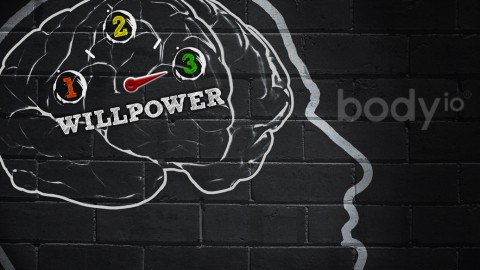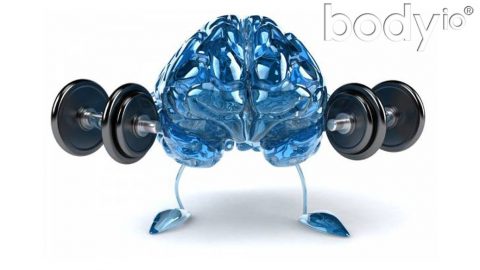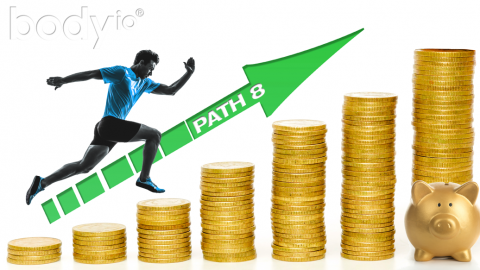ifferent tracking methods appeal to different personality types. Different methods also become more/less relevant based on your body fat percentage. Just like diet and exercise, you have to find what works for you. You might use different methods at different stages of your transformation. Tracking is a tool meant to help you. It’s going to keep you on track and help you determine if you need to make changes to your diet, exercise and lifestyle. Too many people skip progress tracking altogether because it makes them feel uncomfortable. Don’t shortchange yourself by skipping this essential part of the process. There are lots of options, so let me help you find a method that will work for you.
Everyone
Everyone, despite what other methods they choose to incorporate, should be taking pictures and girth measurements, observing how they look and feel, checking how their clothes fit on a monthly basis, and recording this data in a progress log.
The Data Junkies
These people tend to lean towards DEXA scans and, if they have access, hydrostatic weighing or Bod Pods. Some people enjoy this process, so if it’s in your budget, go for it!
If you choose to go this route, I still recommend taking photos and girth measurements and asking yourself how you feel and look. People who tend to chase numbers, specifically an extremely low BF %, sometimes overlook the more obvious things, such as not feeling great or possibly looking worse (maybe too lean), which usually go hand in hand.
The Super Shy Type
Believe it or not, I fall into this category. When I worked in a big-box gym, many of my clients preferred to track progress on their own and provide me with the data via email, much like I do now with online clients. This is perfectly fine. If you’re shy, you probably don’t want to go in for scans, get into a Bod Pod, or pose for progress photos. If you’re like me, you definitely don’t want your coach grabbing and twisting your skin folds for caliper readings, nor should you have to. There are plenty of other options.
Tanita scales are a good option for people who want some idea of their actual body composition. Most gyms have these scales or you may choose to invest in one for your home. Tanita does have a wide variety of products in a wide range of prices. I would research and invest in one of their high-end scales that takes readings from both feet and hand sensors simultaneously.
The Emotional Type
Some people have a very negative emotional experience when it comes to tracking progress. There are plenty of options, so don’t disregard tracking altogether. Your trainer or coach can confidentially record your data. If you work with a coach online or if you don’t have a coach, a friend or spouse can keep track of your data for you without you seeing the results. They can simply indicate if they feel you are progressing or stalling. There is nothing wrong with this method and when/if you’re ready, you will be happy to go back and look at the data and photographs.
Asking yourself how you feel and look, and how your clothes fit is also a great way to stay on track and motivated without looking at specific numbers. The numbers are what seem to spark an emotional reaction from most people.
People with High Body Fat Percentages & Health Risks
People who have a high BF % typically don’t like being subjected to things like caliper measurements, nor do I feel that this is necessary. I see too many trainers subject people to things for selfish reasons (in this case, more experience with calipers). Don’t let your trainer bully you into tracking methods that make you feel uncomfortable. Tracking progress should be a positive experience for you.
While DEXA scans are essential to track changes in visceral fat (directly associated with health risks),not everyone has access to them or other body fat analysis tools. The people in this category are likely embracing a lot of change at once. They are just starting to go to the gym and pay attention to their nutrition. Their focus is on weight loss, which can happen quite quickly for some. For this type of person, a regular scale can be a great tool. It’s quick and easy to use, it’s not invasive, and it can easily becombined with girth measurements, photos, and personal assessments of how one looks and feels and how their clothes fit.
Leaner Individuals
Pictures, pictures, pictures! How do your clothes fit and how do you feel?
If you’re already lean, you can kiss the scale goodbye, as it will be your most unreliable tool. In fact, you might look better when the scale goes up. Girth measurements can also be somewhat unreliable at this point. You tend to hit a sticking point, so remember that smaller isn’t always better. In fact, getting smaller might actually represent muscle loss. For example, my midsection doesn’t look better at its smallest measurement; it looks better when I have more developed abdominal muscles that are full of glycogen. Observing how your clothes fit is also important. Are your shoulders, quads, glutes and arms no longer filling out your clothes? Do they hang off you in all the wrong places? If yes, then it might be a good indicator that you need to assess what is actually going on with your body composition with the help of some hard data. You might even need to GAIN some weight (preferably muscle).
For many people, chasing a number, regardless of what method is being used, can be misleading. Leaner and smaller is NOT always better, and likely not realistic to maintain over the long term. If you don’t feel and look strong and healthy, then what’s the point?
Stay tuned for Part 3, where I tie all of this together.












